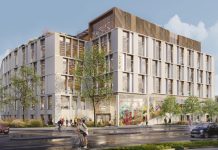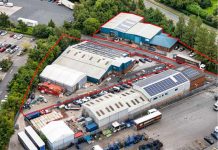The North West retail sector is seeing a widening divide between ‘the best and the rest’ with rental levels at prime sites soaring while those in secondary locations suffer substantial declines, according to the latest Midsummer Retail Report (MSRR) by real estate advisors Colliers International.
The annual sector-leading research – providing authoritative perspectives across the UK shopping scene by looking at the trends and innovations which are shaping the country’s retail sector and its property market in some 420 locations – revealed increasing polarisation at each end of the quality scale in the North West.
Prime rents at premier retail destinations such as intu Trafford Centre and Wilmslow, Cheshire, rose by six per cent, greatly outperforming a GB average increase of 1.6 per cent including London and 0.8 per cent excluding the capital.
The MSRR revealed that prime rents at intu Trafford Centre had reached £425 per sq ft – the first time that rents there have passed £400 per sq ft since 2010 and giving the centre the highest prime rent in the entire North West.
Out-of-town shopping complexes such as intu Trafford Centre remain popular with consumers because of their appealing combination of free parking, enhanced food offering and the availability of click-and-collect services.
Other positive performances were achieved in the regional retail capitals of Manchester and Liverpool where vacancy rates continued to fall.
These success stories contrasted sharply with rental levels in so-called secondary locations such as Ellesmere Port, Crewe and St Helens suffering double digit declines of 22 per cent, 11 per cent and 15 per cent respectively because of falling demand for shop units.
Retail rents in the North West overall saw a slight decline of 1 per cent from plus 0.3 per cent in 2016 to minus 0.7 per cent in 2017 with an average Zone A rental figure of £86 per sq ft.
Ongoing demand from retailers for units in prime shopping centre developments is reflected by the second storey extension to Barton Square Courtyard at intu Trafford Centre, opening in 2018.
Conversely, the 275,000 sq ft Barons Quay scheme in Northwich, Cheshire has proved less easy to let with a considerable amount of space at the £80m scheme still available.
The MSRR said the North West had its “fair share of challenging BHS stores to deal with” resulting from the demise of the high street giant in 2016 but that the large amount of space vacated by BHS outlets had provided opportunities for local authorities to fulfil longstanding requirements.
Such larger sites coming to market offer the chance for redevelopment into alternative usage such as leisure, hotel, residential and offices in areas with an oversupply of retail.
The most significant of four retail warehousing schemes of more than 100,000 sq ft coming to the region is Edge Lane Retail Park, Liverpool which will provide 110,000 sq ft of space via phase one in 2017 and a total of 450,000 to 500,000 sq ft on completion.
Lloyd Entwistle, director, retail agency at Colliers International, said: “Our latest Midsummer Retail Report shows how the split between the best and the rest is continuing to widen with increasing polarisation at each end of the quality scale.
“It’s clear from our research that new demand is focused on the very best locations and that this continues to drive competition for space and the flight to prime by both retailers and consumers.”






















